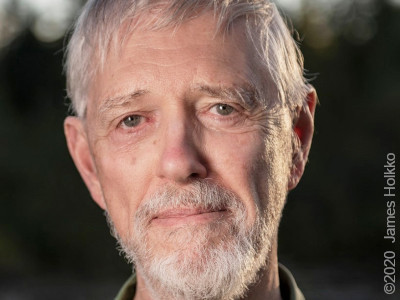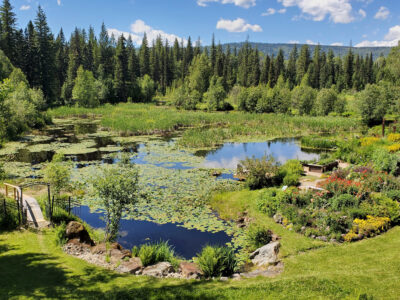Edgewood Wild is dedicated to the Secwécpemc People, on whose traditional lands it took root, and from whose traditional ways it takes inspiration.
Artists, Educators, Environmentalists, Naturalists, Poets, Scientists, Students, Thinkers, Writers & Others
When wildfires burn down our communities and rising seas swallow island nations whole, it’s not just bad luck, it’s signal to a new era in the history of the Living World. And of course the human world too, embedded within it.
In a word, it’s the PANDORACENE, the time of consequences.
The Pandoracene began a few decades back when deepening climate change finally upended 11,000 years of relative environmental stability – the same stability that sustained human agriculture and, through this, the stop-and-go advancement of human civilization.
Stated more directly, the curtain has now risen on a new world order – one in which unstoppable environmental mayhem is the new norm and deepening uncertainty our common lot.
Gone forever is the benign, turn-the-other-cheek world that used to serenely absorb whatever insults we cared to throw at it. In its place looms a volatile, eye-for-an-eye world of deepening storm and strife – an Old-Testament kind of world that may one day, so it is written, consume human civilization itself.
Admittedly this last statement runs afoul of the techno-optimist doctrine that advanced technology is our salvation. And while technology can certainly help wealthy nations brace for the storm that technology itself has set in motion, we’d do well to recall that stirring up the storm is one thing, but controlling it is quite another – especially now, as Gaia goes precisely out of control.
Climate change speaks in diverse vernaculars: fire, drought, famine, heat, wind. And against these, technology is of some avail. But climate change also speaks in the language of multiplying threats to the global order: socioeconomic instability, authoritarianism, xenophobia, forced migration, climate wars. And against these, unfortunately, technology can do little.
Let’s face it. Human thriving in the Pandoracene needs something more than technological fixes. Indeed, it needs something more than any concept that has yet received a name in Western culture. So let’s give it one. Let’s call it Gaian reconciliation, and let’s mean by this a process of coming to terms with the Living World that sustains us or, again, of fully embracing our existential status as Earthlings.
Indigenous peoples have long embodied the principle of Gaian reconciliation. Gaian reconciliation is what it means to sustain one’s community through practices of profound attention to, and dialogue with, the Living World. And let’s be clear here. This is not magic thinking or naïve animism. Instead, this is a profoundly pragmatic stance to getting by in the world – an attitude of Gaian respect shared by all long-term systems of human thriving.
As for us, we live in time of rising crescendo. Let us once get a proper fix on the Climate Climacteric we’re headed for – a time when our social structures crack and fail, when climate refugees number in the tens of millions, when the terrible psychological weight of loss bears down like leaden rain – and Gaian reconciliation will shine forth like the one and only antidote to infinite aspirations in a finite world.
Why do I feel so sure about this? Because climate change isn’t going away. Fads come and go, but climate change is here to stay. It will go on banging at the gates of human exceptionalism, louder each year, until finally our hearts open to the message behind it. Need will drive the affair.
But that’s for tomorrow. For today, surely the task at hand is to help young people prepare for a time of reckoning now unlikely to be averted. How? There are any number of ways, but the one most likely of long term success, or so it seems to me, is precisely the one most likely to be overlooked in this time of narrowly focused human self-absorption: to open up vocational space for the born naturalists among us.
Born naturalists are those deeply preoccupied individuals who everyone has met but few in our culture really understand. They’re the ones – Indigenous and otherwise – who sustain into adulthood a childlike sense of life’s essential mystery; the ones whose focal length falls somewhere beyond the limits of immediate human self-interest; the ones who spend a lifetime chasing down a sense of belonging to the Living World; the ones who, latterly, grieve in their hearts for all the dying going on around us.
It’s not for nothing that born naturalists live among us. Such people are not mere remnants of a bygone past – they are humanity’s perennial ambassadors of the Wild. In tribal times – encompassing almost the entirety of human history – they performed crucial gaiacentric functions within their cultures as knowledge keepers, way finders, story tellers, visionaries and shamans. In modern times, they are sometimes called nature lovers or tree huggers, but rarely are they called to vocation; and while tolerated in Western society, they are seldom much heeded.
In the Pandoracene, this must now change. Ask yourself: who better than the born naturalist philosopher and scientist to break trail to a situated understanding of human self-interest; who better than the born naturalist artist, educator and writer to sustain the societal conversation that must set the stage for Gaian reconciliation; and come to that, who better than the born naturalist poet and visionary to feel their way to the life-affirming narrative that must sooner or later supplant our current toxic one now drawing to a close?
From these and other similar insights, Edgewood Wild takes its bearings. Drawing inspiration from traditional Indigenous reverence toward the Living World, it asks – with equal measure urgency and humility – how Western culture might be inculcated to a Gaian ethic. To this end it subscribes to a world view both ancient and cutting edge, one that gives creed to the old stories while embracing the astonishing new ones now being told about life by Western science itself.
Be welcome. I’m your host and sometime-provocateur, Trevor Goward
Edgewood Wild: about Trevor Goward
Coming out of the blue, as this website does, it may be well to say a few words about the person who dreamed it up.
What’s there to say? At one level, I’m a born naturalist with a born naturalist’s passion for the living things of this world. At another level, I’m a field scientist with a scientist’s determination to contemplate and fit those living things into patterns of understanding. At a third level, I’m a life-long student of lichens and, as such, a student also of some of the societal paradoxes and conundrums that hallmark our time. At a fourth level, I’m author/coauthor of 130 scientific papers, scores of popular writings, and four books. Finally, at a fifth level, I’m the more or less reluctant host of three websites: http://www.waysofenlichenment, http://1000clearcuts.ca and the one you’re reading.
When not writing, gardening, wandering or pondering, I can usually be found in pursuit of various thought experiments including Gaian apprenticeship, Gaian mentorship, poetic ecology, “bewillderment,” the myth worlds of H.D. Thoreau, R.M. Pirsig, D.J. Trump, R. Powers and J.R.R. Tolkien, and (through this last) a stewardship practice I call elvenwork, cutesy or not.
Edgewood Wild: the Project
Edgewood Wild is invitation to gather in community for wild immersion and wide-ranging conversation. Day to day, its currency is insight, inspiration and wayfinding in troubled times. Long-term, its aim is to help catalyze a paradigm shift toward a world view that reverences, or at any rate respects, the Living World that sustains us.
Events are built around interpretive walks and focus sessions, supplemented by directed readings and the themes explored in the essays at bottom of this page. The preferred format is show-and-tell, question-and-answer, and group sharing / comparing in the name of epiphany.
Why am I doing this? That’s easy. Getting on in years, I’d like to put a lifetime of looking and thinking about the Living World at the disposal of those who come after. What else is there to do at this late hour, really?
Sister Initiatives
Edgewood Wild: the Place
The venue is home, my home, Edgewood Blue, a small back-eddy in the great dangerous river of our time: four hectares of woodland, meadow, wetland, pond, garden, grounds, and a house with a red, red roof – all concentrically cradled by 56 ha of wildlands and, beyond that, 540,000 ha of parklands stretching to the skyline in three compass directions – north, west and east – and set in a deep valley amid the highlands and mountains of south-central British Columbia.
Lodging is available nearby.
Edgewood Wild: How to find out more?
Terms & Concepts summarizes the big ideas advanced by Edgewood Wild, while You Brew provides details on group visits: how to arrange them and what to expect.
Edgewood Wild: About this Website
The time has come, the Walrus said, to talk of many things – Lewis Carroll
This website consists, for now, of about 70 first-approximation “windows” on the Living World, each a short essay. Forty-five of these re-examine western cultural assumptions in light of newly imposed Pandoracenean imperatives. Most of the remaining ones introduce talking points for trailside chats and campfire conversations.




